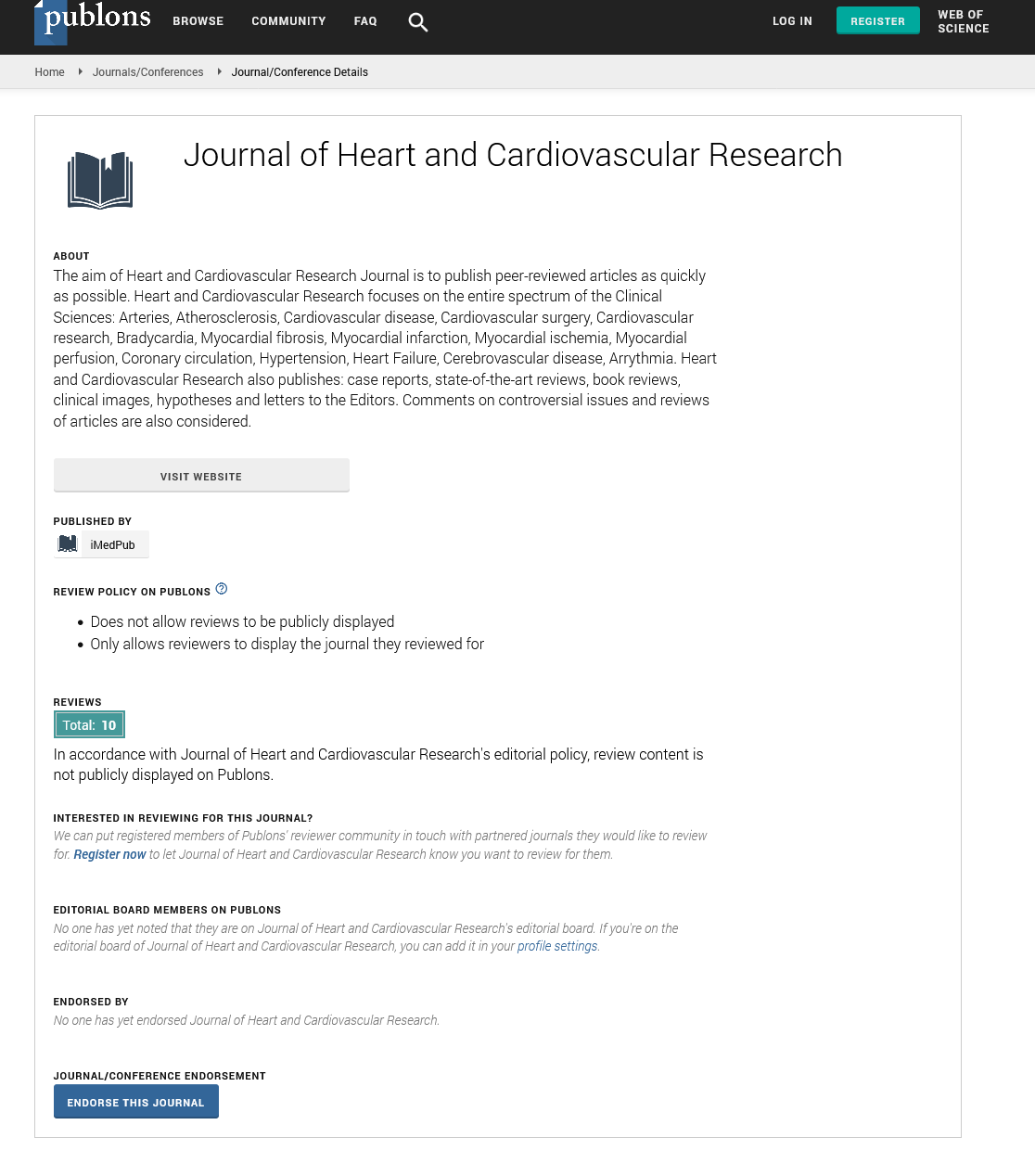ISSN : ISSN: 2576-1455
Journal of Heart and Cardiovascular Research
Abstract
Cardiology 2019:A cross-sectional research study of blue-collar workers health in relation to their life style and cardiovascular diseases - Naseer Ahmed - Bright Future College of Nursing and Allied Health Sciences
Construction work is highly demanding, because workers are incessantly exposed to harsh environments filled with fumes, dust, heat, and moisture . Cardiovascular diseases, following musculoskeletal diseases, are one of the major causes for early retirement among these workers, because of the “healthy worker effect” . Risks for poor cardiovascular health were more prevalent among construction workers than those in other occupations. In one study, construction workers were 15% and 9% more likely to have hypertension and diabetes, respectively, when compared with workers in the service sector (ORhypertension: 1.15, 95% confidence interval (CI): 1.11–1.18; and ORdiabetes: 1.09, 95% CI: 1.02–1.17) . In another study, construction workers were 56% more likely to be obese than white-collar workers . Seventy-one percent of construction workers were either overweight or obese, compared with 67% of all industries. When compared with office clerks and professionals, construction workers were more likely to have metabolic risk factors (raised blood triglycerides, high-density-lipoprotein (HDL) cholesterol, fasting glucose, central obesity, and hypertension) (OR: 1.62, 95% CI: 1.03–2.56). A related finding also revealed that blue-collar workers, to which construction workers belong, had 4.3 times higher risk of a first event of non-fatal acute ischemic heart disease than white-collar workers . Similar to Western countries, Hong Kong’s construction industry suffers from a shortage of construction workers and a depleting aging workforce. To solve these problems, workers’ health behaviors and cardiovascular health factors, apart from the workplace as pinpointed by the World Health Organization , may have to be looked into more closely in order to avoid early retirement caused by the diseases and to improve the productivity of the existing workforce.
Author(s): Naseer Ahmed
Abstract | Full-Text | PDF
Share This Article
Google Scholar citation report
Citations : 34
Journal of Heart and Cardiovascular Research received 34 citations as per Google Scholar report
Journal of Heart and Cardiovascular Research peer review process verified at publons
Abstracted/Indexed in
- Google Scholar
- Sherpa Romeo
- China National Knowledge Infrastructure (CNKI)
- Publons
Open Access Journals
- Aquaculture & Veterinary Science
- Chemistry & Chemical Sciences
- Clinical Sciences
- Engineering
- General Science
- Genetics & Molecular Biology
- Health Care & Nursing
- Immunology & Microbiology
- Materials Science
- Mathematics & Physics
- Medical Sciences
- Neurology & Psychiatry
- Oncology & Cancer Science
- Pharmaceutical Sciences
